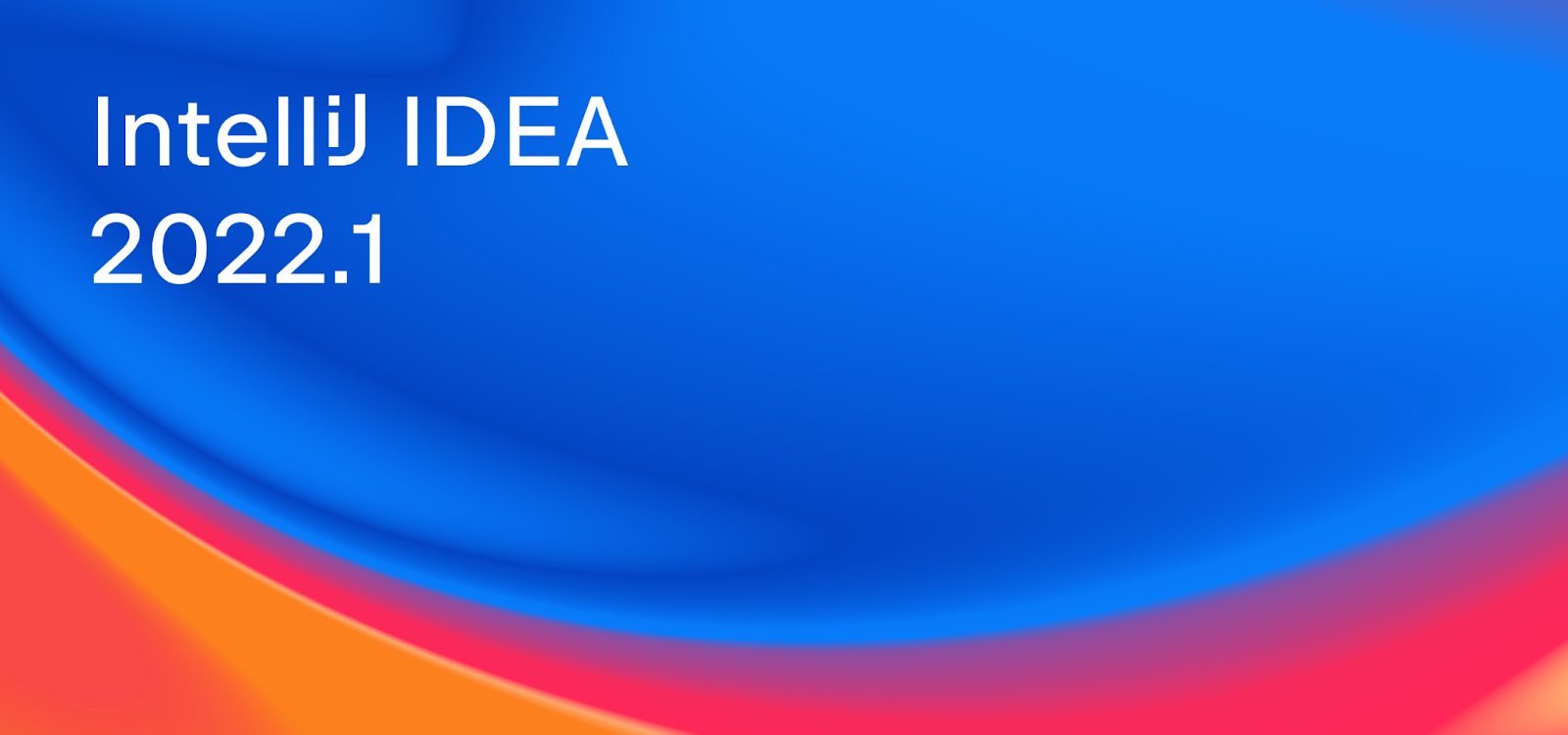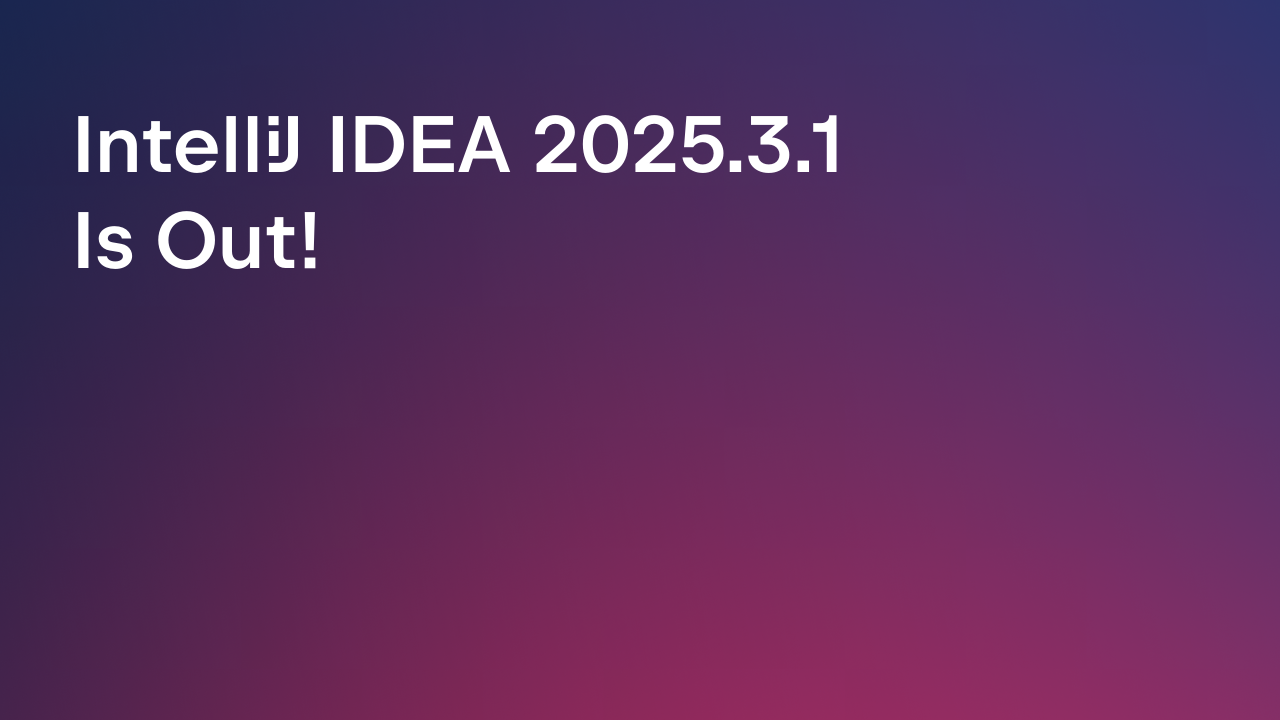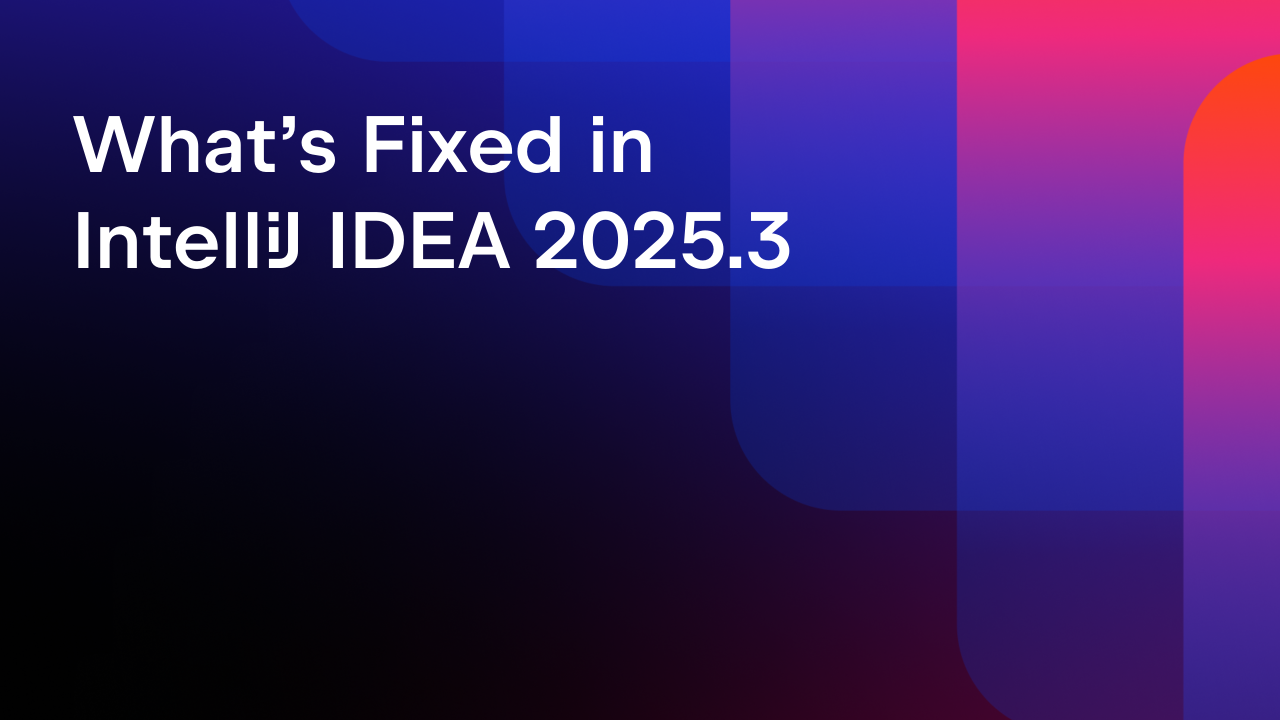IntelliJ IDEA
IntelliJ IDEA – the Leading IDE for Professional Development in Java and Kotlin
IntelliJ IDEA 2022.1 Is Out
IntelliJ IDEA 2022.1, our first major release of the year, is now available. It offers multiple enhancements and lots of new features to improve your experience with the IDE.
This version introduces the Dependency Analyzer that facilitates dependency management and conflict resolution. The Notifications tool window offers a whole new way to receive and store notifications from the IDE. The updated New Project wizard makes it easier to launch new projects of any scale and complexity. We’ve upgraded Code Vision inlay hints with Code Author hints and enabled them all by default to provide you with instant insights about your code right in the editor. We’ve also added support for the new features in Java 18 and significantly improved the IDE’s performance with Kotlin.
You can download the new version from our website or update it directly from the IDE. Also, you can update to it via the free Toolbox App or using snaps for Ubuntu.
Read the blog post to learn more about the highlights of this release.

Key Updates
- The newly introduced Dependency Analyzer provides information about all Maven and Gradle dependencies used in your project and ensures enhanced dependency management, instant conflict resolution, and easy build configurations correction.
- The Event Log instance was replaced with a new Notifications tool window to more clearly highlight important and helpful notifications.
- We reworked the New Project wizard interface to streamline creating new projects for both newcomers and experienced users.
User experience
- We’ve implemented improved Code Vision inlay hints that provide you with instant insights about your code right in the editor. The list of displayed metrics now includes inheritors, usages, code authors, and related problems. The metrics are all enabled by default now and can be modified in Inlay Hints Settings. These settings have also been updated and given a new configuration UI.
- It’s now possible to evenly distribute the working space and split it into tabs of the same width.
- The updated New Project wizard now offers the reworked Maven Archetype project generator with enhanced archetypes browsing and archetype catalog management.
- With IntelliJ IDEA Ultimate, you can now export UML diagrams to other formats.
- The Structural Search and Replace dialog has been redesigned and now offers an easy way to browse templates and a more convenient UI.
- Also, we’ve introduced a number of updates and fixes for IntelliJ IDEA’s accessibility features to better accommodate the needs of our users.
Security
- IntelliJ IDEA Ultimate 2022.1 detects Maven and Gradle dependencies that are considered vulnerable, and suggests fixes where available. This is made possible by Checkmarx Software Composition Analysis, which is bundled into the IDE through the Package Checker plugin.
Editor
- In the Markdown editor, you can now run commands directly from the file using the Run icon on the gutter and copy code blocks using the new Copy code snippet.
- You can now perform code reformatting when working in LightEdit mode.
- We’ve added a new Incorrect formatting inspection that detects formatting issues in accordance with your project’s code style settings.
- To ensure code formatting consistency, the Add a space at line comment start option has been augmented with an Enforce on reformat checkbox that is enabled automatically.
- The command-line formatter now supports a dry run mode to validate project files.
Java
- IntelliJ IDEA 2022.1 supports new features from Java 18, which was released in March 2022.
- The Java decompiler has been updated and is now more compatible with the Java 17 release.
- We have added support for the new features introduced in JUnit 5.7, including support for the @EnabledIf/DisabledIf, @NullSource/EmptySource, and @TempDir annotations.
- We’ve updated the Surround with try/catch template so that it now re-throws an exception wrapped into a RuntimeException instead of swallowing it.
Kotlin
- IntelliJ IDEA 2022.1 supports Kotlin 1.6.20, so the latest language features are now available in the IDE.
- We’ve optimized package indexes which led to a significant boost in the IDE performance for Kotlin.
- We’ve introduced some useful improvements and updates for the Smart Step Into functionality while debugging Kotlin projects.
- The Kover plugin has been integrated with IntelliJ IDEA to ensure better Kotlin code coverage.
Groovy
- We’ve improved code completion for Groovy by adding most of the Java-like postfix templates.
Frameworks & Technologies
- IntelliJ IDEA Ultimate now supports Go microservices, providing features like URL path references, endpoints, Search Everywhere, and gutter icons. More details here.
- When working with Spring Data MongoDB, IntelliJ IDEA now highlights JSON queries, completes operators and document fields, and provides navigation to the Database tool window from mapped entities.
- We’ve improved support for .proto files. There’s a new intention action that adds missing import statements for unresolved message references and the IDE provides completion suggestions.
- IntelliJ IDEA Ultimate now better supports gRPC reflection. You can now run requests and get completion for service and method names directly from a running server instance.
- The improved support for Thymeleaf includes fewer false-positive inspections, enhanced IDE performance when editing Thymeleaf templates, and fine-tuned inspection and highlighting levels.
- The Helidon framework is now better supported with config key completion in properties files and .yaml files as well as support for the Go to Declaration and Quick Doc actions.
Build tools
- The updated progress bar for Gradle now shows what exactly is happening with the files and helps you estimate when the process will be complete.
- With new experimental functionality in the Maven compiler plugin, you can now set specific language levels separately for production and test sources.
Version control
- IntelliJ IDEA now provides you with Code Vision hints about code authorship based on the VCS history.
- Annotate with Git Blame functionality has been improved and now highlights the exact fragments that have been changed within each line of code.
- The Commit Details tool window now includes information about GPG signatures and the build status.
- The new UI for the Git File History tool window is now independent from the indexing process and is used even if the Log index is off.
- It’s now easier to manage suggested changes in GitHub Pull Requests comments, as you can now apply or commit changes locally in the IDE.
- IntelliJ IDEA 2022.1 now allows the user to specify different external diff and merge tools based on the file type.
Profiler
- IntelliJ IDEA Ultimate now offers the IntelliJ Profiler – a single profiler configuration that combines the power of Async Profiler with that of Java Flight Recorder.
Debugger
- In the Frames view of the Debugger tool window, we’ve moved the Drop Frame action from the toolbar and made it available with an inline Reset Frame icon.
- To maximize the usable space in the Debugger tool window, the tab labels are now hidden by default.
QA Tools
- The Selenium UI Testing plugin got a significant improvement for its Page Object Editor including enhanced functionality and redesigned UI.
- We’ve implemented the new Page Object wizard that allows you to choose the language and test automation framework when creating a new page object class. For more details about the updates to the QA tools, check out this blog post.
Kubernetes
- Resources loaded from the cluster can now be modified from the editor tab.
- You can now manually configure a path to kubectl if it is not in the standard location.
- Port forwarding functionality for pods is now available.
- There is a new Describe Resource action for all resources in the Services view.
- Cluster events are now displayed in a separate node in the Services view, providing data about recent events in the system. You can also see events for a specific pod by calling the Describe Resource action on it.
- We’ve introduced limited editor support for werf.yaml and related Helm template files.
- IntelliJ IDEA Ultimate now provides support for importing child values via import-values settings affecting the completion and navigation of built-in objects in templates.
Docker
- We’ve updated the Docker UI in the Services tool window. The makeover has been implemented for containers, images, networks, and volumes.
- You can now create and configure new Docker Compose targets to run and debug your applications in containers managed by Docker Compose.
- We’ve added support for Docker Registry HTTP API V2 to use with Docker 1.6+.
Remote development
- Remote development now features a Backend Control Center widget showing CPU load, memory, disk capacity, and other parameters.
- A new security setting now lets you use SSH key forwarding to authenticate access to Git repositories from your remote machine.
- You can now specify the download path and exact locations for the IDE backend on your remote machine.
- JetBrains Client now supports more file editors, so you can now work with PNG images, UML diagrams, Jupyter Notebook files, and Android layout resources.
- We’ve added Run with coverage and a Profiler window to the gutter menu, included Maven and Gradle tool windows in the context menu, and implemented more helpful submenu items.
- We’ve also improved the debugging functionality and made multiple actions available to enable effortless code examination when developing remotely.
Database Tools
- You can now select multiple tables and copy them to another schema. Learn more about it in this blog post.
- You can now edit the results in MongoDB collections just as easily as in relational databases.
- We’ve reworked the logic for canceling running statements to make it clearer that it is the request that is being canceled and not the query that is being terminated. Read more in this blog post.
- You can now stop the process of creating a connection without deactivating the data source.
Web development
- IntelliJ IDEA Ultimate now better supports Next.js framework.
- We’ve added proper integration with Volta so that the IDE will automatically recognize Yarn and npm installed using this JavaScript tool manager.
Scala
- We’ve implemented a number of improvements to Scala 3 support.
- The New Scala Project wizard has been enhanced to make configuring a new Scala project easier.
- To improve the user experience, the editor now treats aliases in the standard library as transparent exports so that, for example, List implies scala.collection.immutable.List rather than scala.List.
- The Unused declaration inspection now supports public bindings introduced by classes, methods, variables, parameters, and so on.
- The Scala debugger has been revamped and given some valuable upgrades.
Space integration
- When reviewing code changes in the IDE, you can now choose when to post a code review comment. Post right away or save your comment as a draft.
- We’ve improved the code review interface by showing applicable keyboard shortcuts.
Plugins
We’ve unbundled the following plugins from the IDE: Spring Batch, Spring Web Services, Grails, JAX-WS, JSF, Java EE: Batch, WebLogic, WebSphere, and Jetty. These plugins are all still supported and released with each of the IDE releases. The only difference is that they now need to be installed from JetBrains Marketplace.
These are the most notable updates introduced in IntelliJ IDEA 2022.1. For more comprehensive details about the new version, you can refer to the release notes.
As usual, we rely heavily on your feedback when developing our product and would love to learn about your impressions and opinions in regard to the new version. Please share your thoughts and suggestions on Twitter, via our issue tracker, or in the comments section below.
Subscribe to IntelliJ IDEA Blog updates








